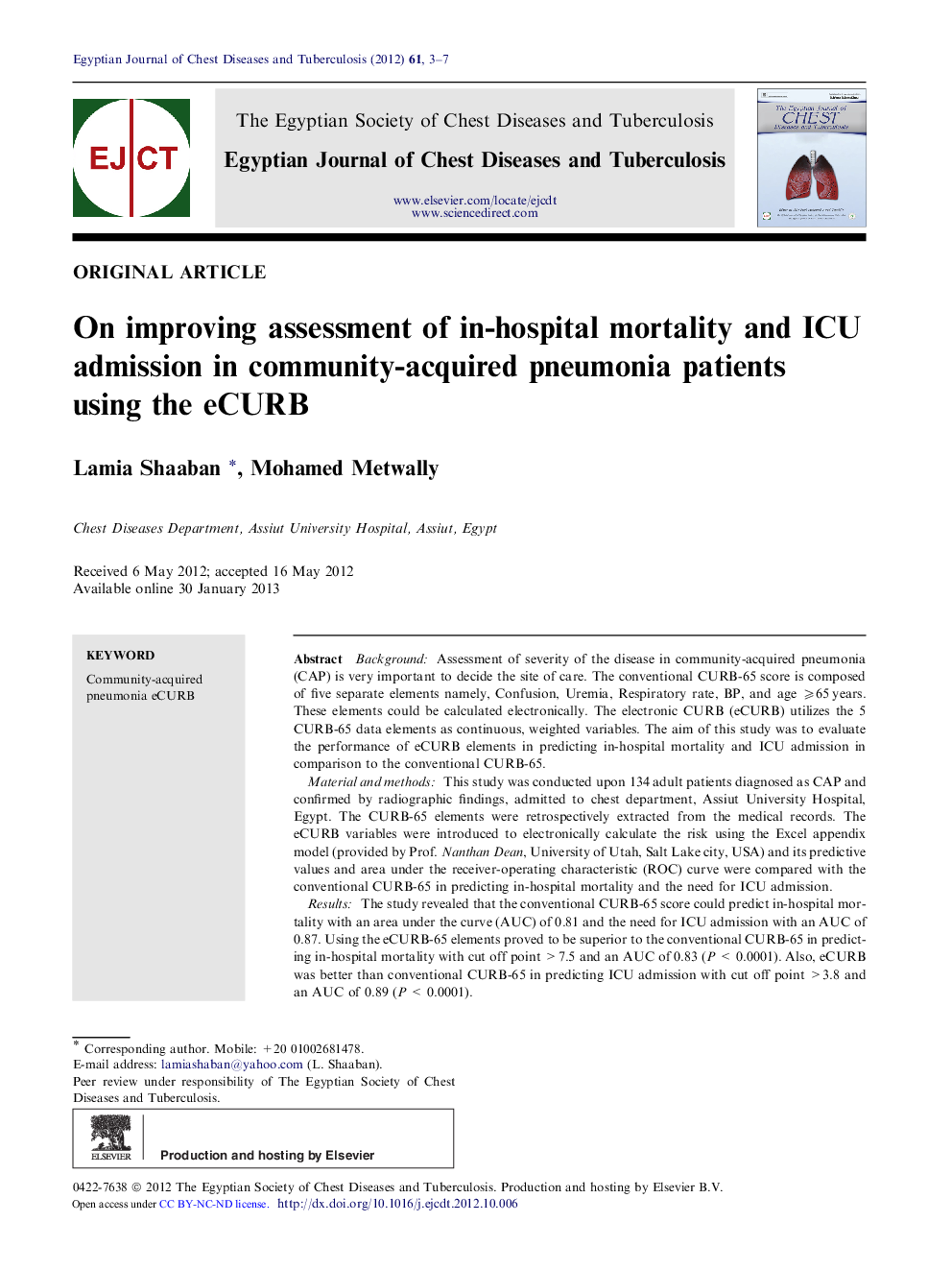| Article ID | Journal | Published Year | Pages | File Type |
|---|---|---|---|---|
| 3400373 | Egyptian Journal of Chest Diseases and Tuberculosis | 2012 | 5 Pages |
BackgroundAssessment of severity of the disease in community-acquired pneumonia (CAP) is very important to decide the site of care. The conventional CURB-65 score is composed of five separate elements namely, Confusion, Uremia, Respiratory rate, BP, and age ⩾65 years. These elements could be calculated electronically. The electronic CURB (eCURB) utilizes the 5 CURB-65 data elements as continuous, weighted variables. The aim of this study was to evaluate the performance of eCURB elements in predicting in-hospital mortality and ICU admission in comparison to the conventional CURB-65.Material and methodsThis study was conducted upon 134 adult patients diagnosed as CAP and confirmed by radiographic findings, admitted to chest department, Assiut University Hospital, Egypt. The CURB-65 elements were retrospectively extracted from the medical records. The eCURB variables were introduced to electronically calculate the risk using the Excel appendix model (provided by Prof. Nanthan Dean, University of Utah, Salt Lake city, USA) and its predictive values and area under the receiver-operating characteristic (ROC) curve were compared with the conventional CURB-65 in predicting in-hospital mortality and the need for ICU admission.ResultsThe study revealed that the conventional CURB-65 score could predict in-hospital mortality with an area under the curve (AUC) of 0.81 and the need for ICU admission with an AUC of 0.87. Using the eCURB-65 elements proved to be superior to the conventional CURB-65 in predicting in-hospital mortality with cut off point >7.5 and an AUC of 0.83 (P < 0.0001). Also, eCURB was better than conventional CURB-65 in predicting ICU admission with cut off point >3.8 and an AUC of 0.89 (P < 0.0001).ConclusionsUsing the eCURB proved to be a valuable tool in predicting in-hospital mortality and ICU admission in patients with CAP with a significant superiority over conventional CURB-65 in both variables. Further prospective studies on a larger cohort are recommended.
